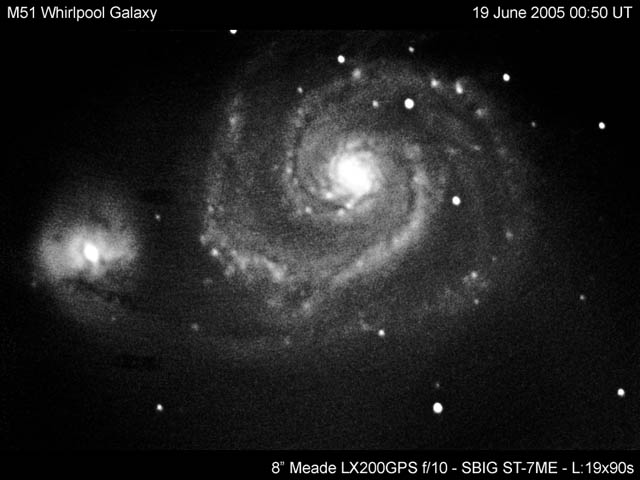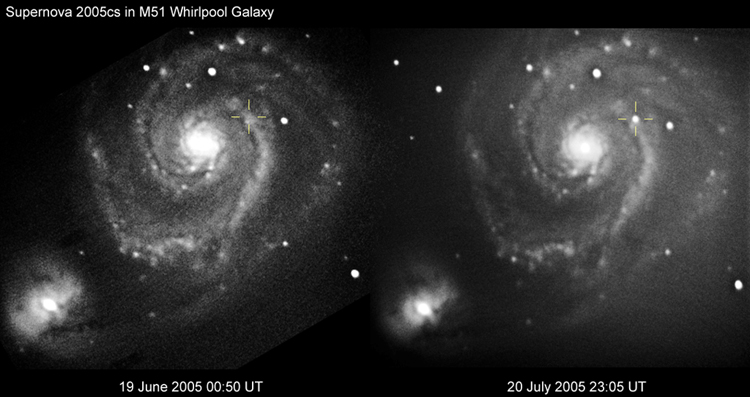|
|
|||
| Whirlpool Galaxy | |||
|
The Whirlpool Galaxy M51 was discovered by Charles Messier in 1773 when observing a comet. According to our present understanding, the pronounced spiral structure is a result of gravitational interaction with its smaller companion. Due to this interaction, the gas in the galaxy was disturbed and compressed in some regions, resulting in the formation of new young stars. As is common in galactic encounters, spiral structure is preferably induced in the more massive galaxy. The distance of M51 is still in some dispute - some put it as near as 15 million light years, but a recent determination yielded 31 million light years. The Whirlpool Galaxy measures about 50,000 light years across and shines with a luminosity of 10 billion suns. ì Click on the image to open a high resolution version. This is the first deep sky image taken with my SBIG CCD camera. As it has been recorded from London it has been difficult to extract the faint object signal from the light polluted sky background. On 27 June 2005, only 8 days after the above image was taken, a massive supernova was discovered by Wolfgang Kloehr. A supernova is the catastrophic explosion of a star, causing it temporarily to illuminate the sky with the brightness of billions of stars. Supernova 2005cs is a type II supernova following the collapse of a red supergiant star because nuclear fusion has stopped in its core. The following image illustrates the before & after comparison of M51: ì Click on the image to open a high resolution version.
Photometry shows the supernova was of magnitude 14.2 at the time its image
above was taken, making it the brightest observable known supernova in the
sky. |
|||
|
|||









